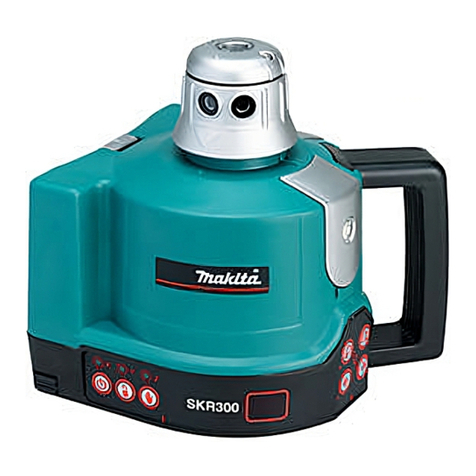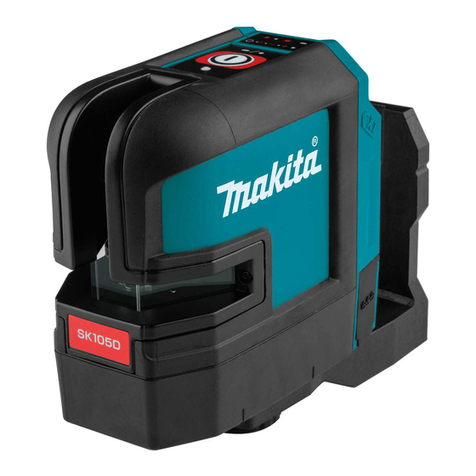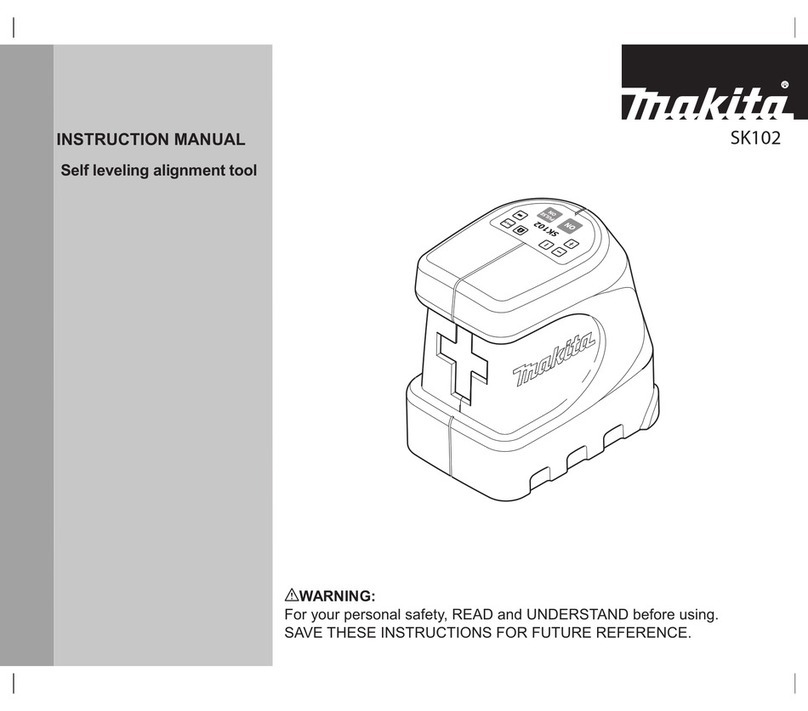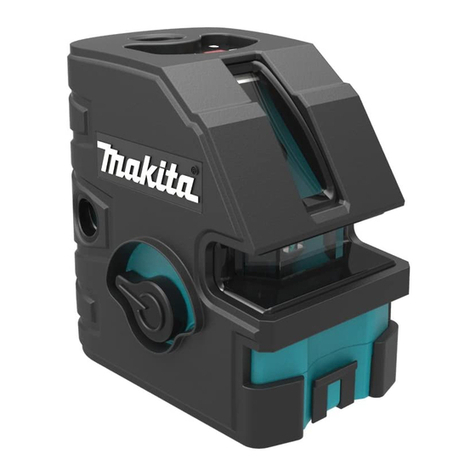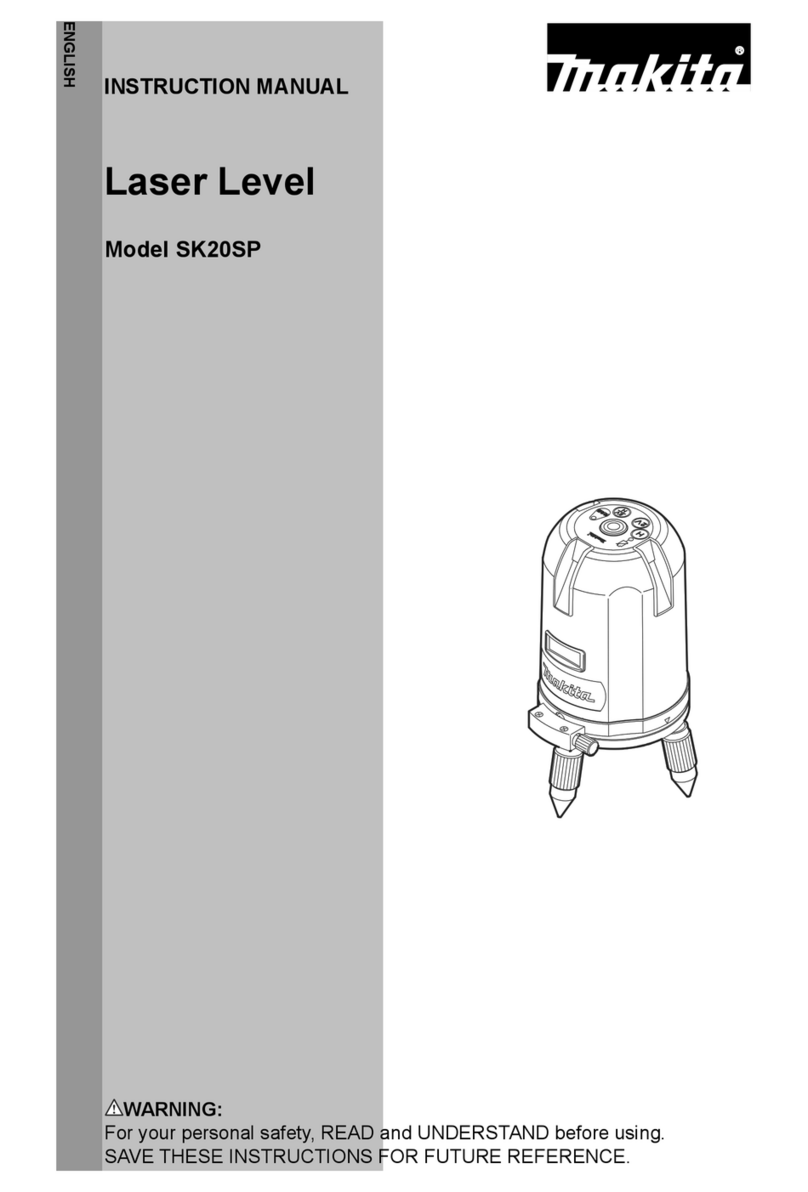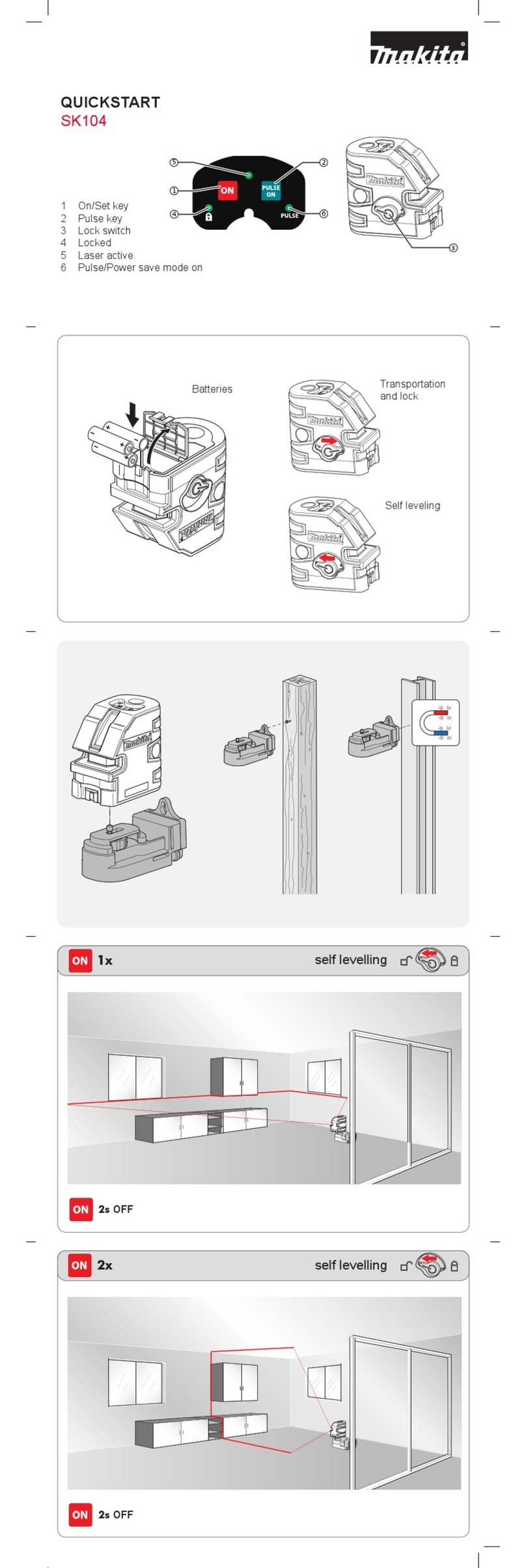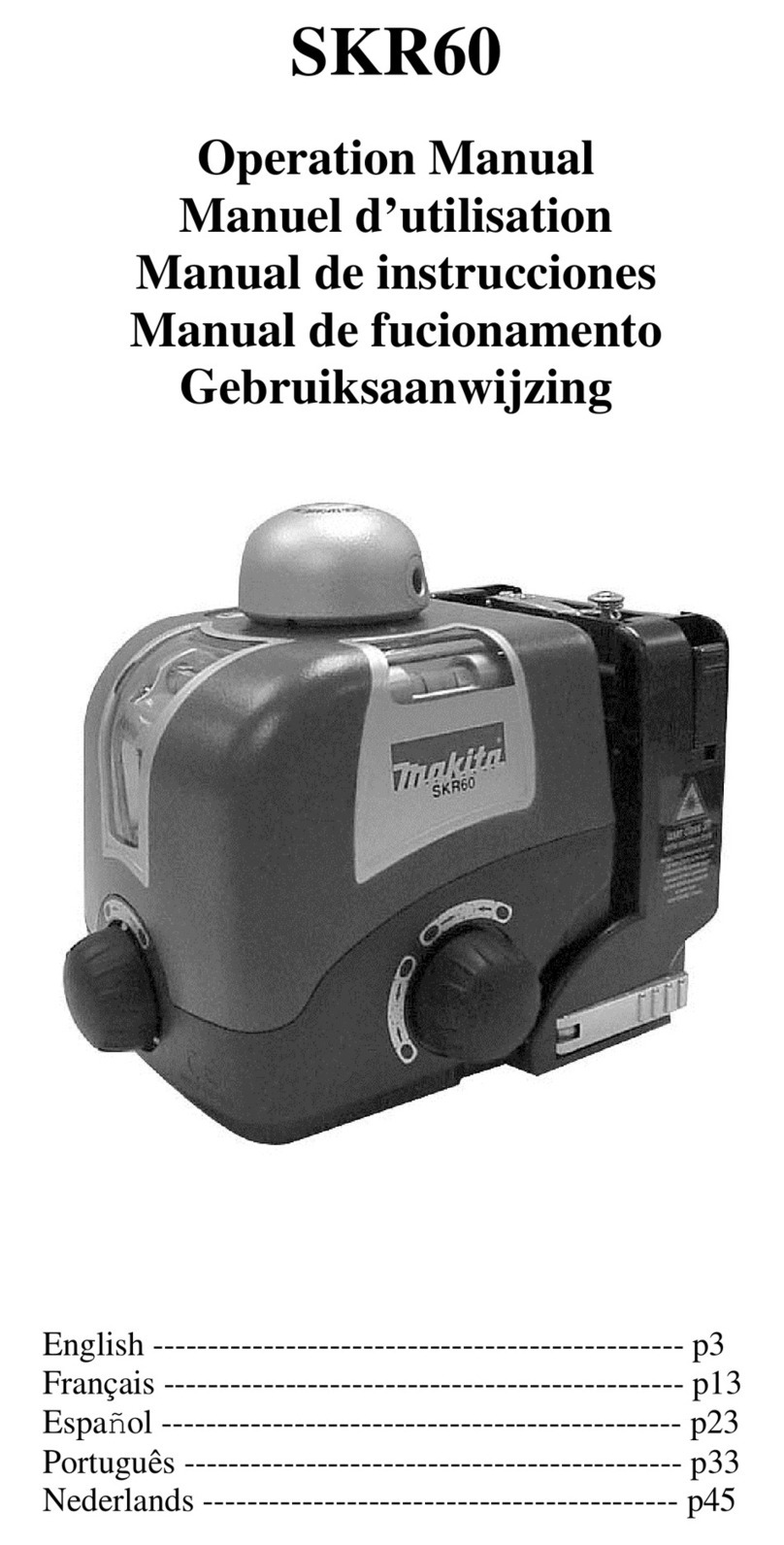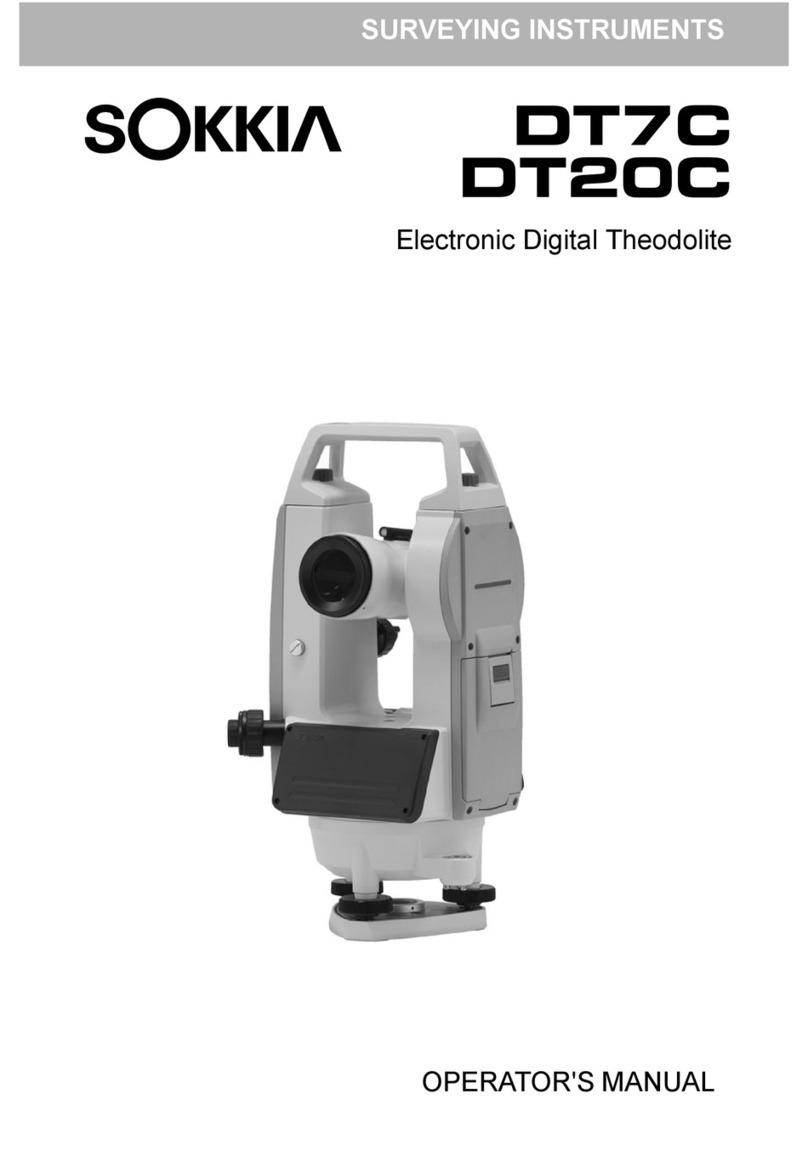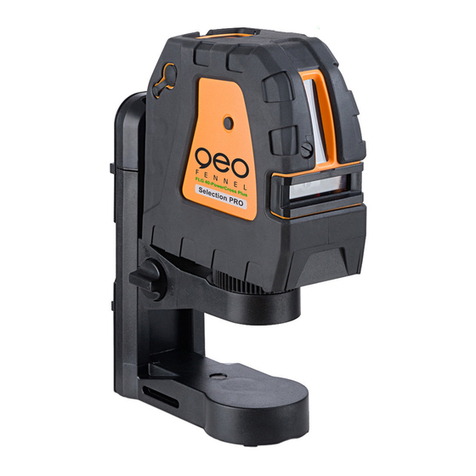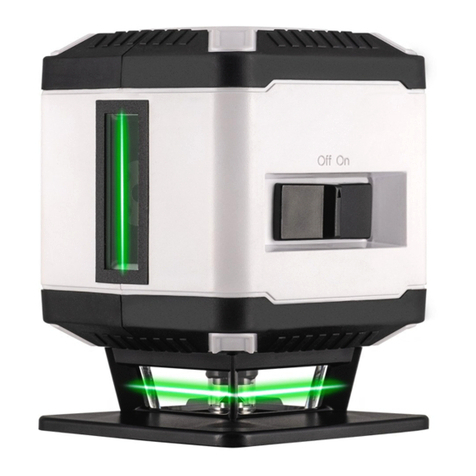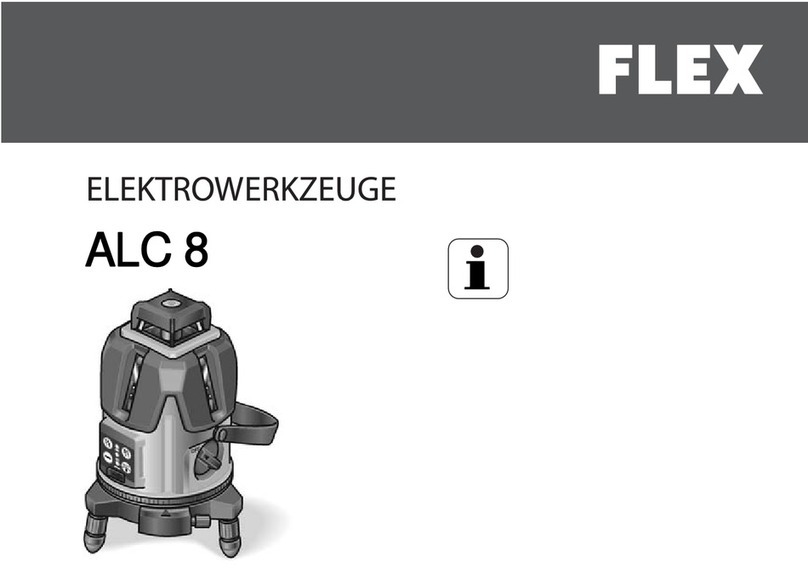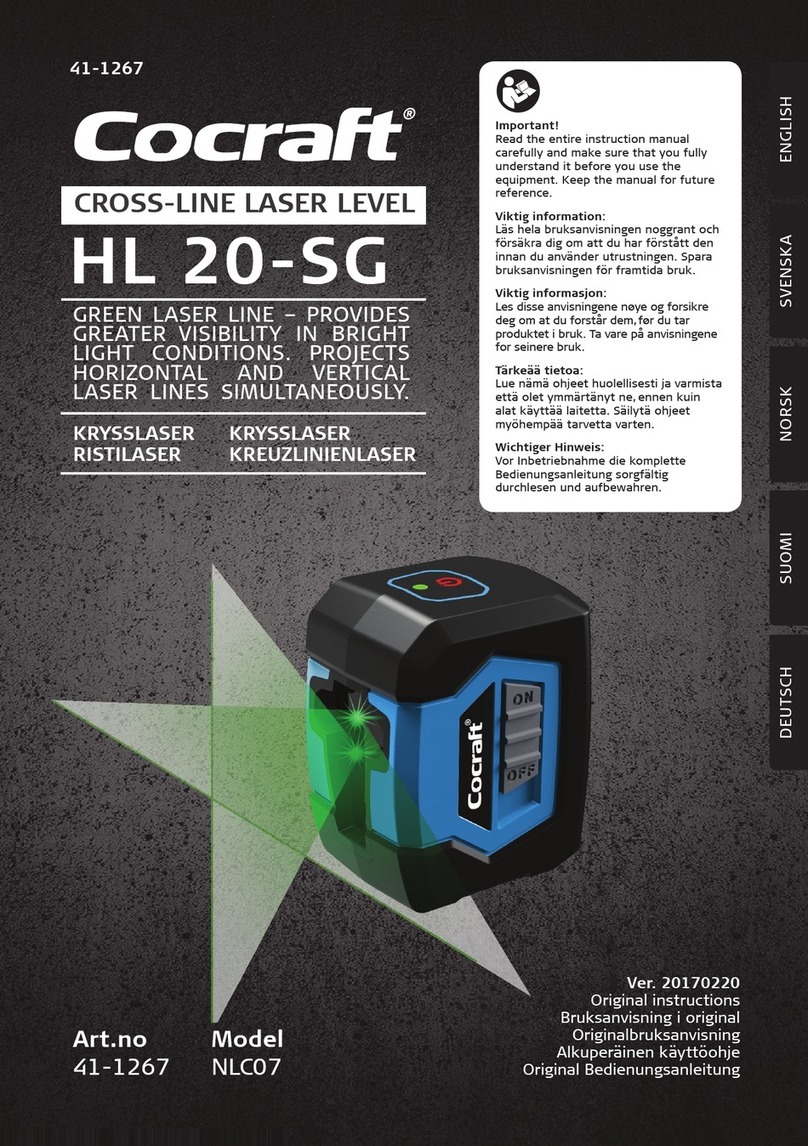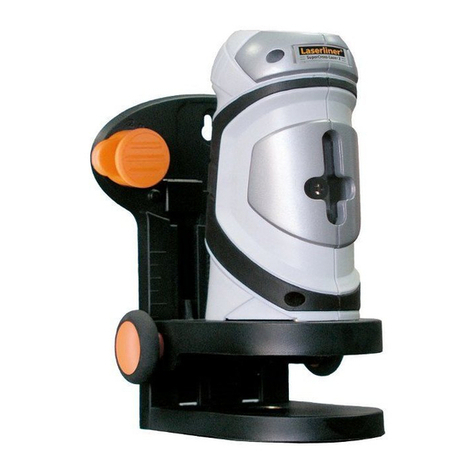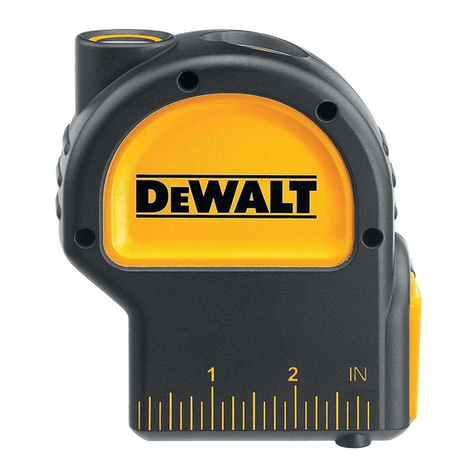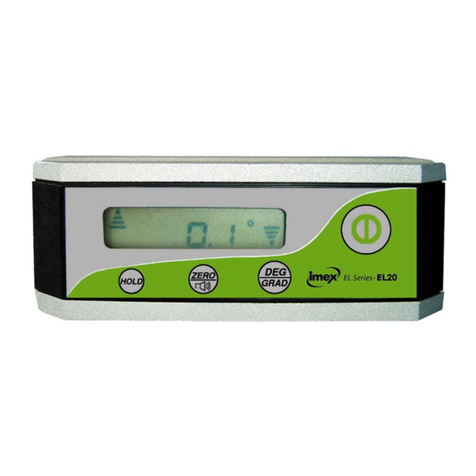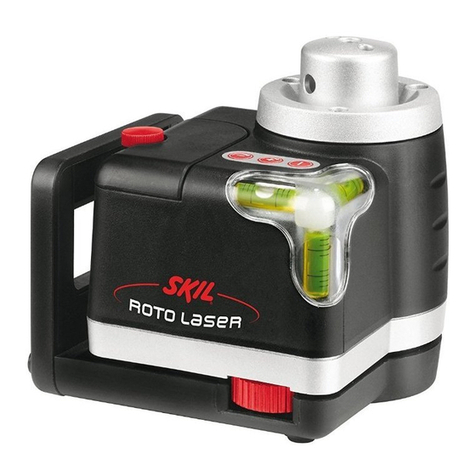
Instrument Set-up
Laser receiver
To be able to detect the laser lines over long dis-
tances or in unfavourable lighting conditions, a
laser receiver can be used.
We recommend the Makita LDX1 laser
receiver.
Li-Ion battery
Installing or removing battery cartridge
CAUTION
Always switch off the tool before installing or
removing of the battery cartridge.
CAUTION
Hold the tool and the battery cartridge firmly when
installing or removing battery cartridge. Failure to
hold the tool and the battery cartridge firmly may
cause them to slip off your hands and result in dam-
age to the tool and battery cartridge and a per-
sonal injury.
To remove the batterycartridge, slide it from the
tool while sliding the button (1) on the front of the
cartridge.
To install the batterycartridge, align the tongue on
the battery cartridge with the groove in the hous-
ing and slip it into place. Insert it all the way until it
locks in place with a little click. If you can see the
red indicator (2) on the upper side of the button, it
is not locked completely.
CAUTION
Always install the battery cartridge fully until the
red indicator cannot be seen. If not, it may acci-
dentally fall out of the tool, causing injury to you or
someone around you.
CAUTION
Do not install the batterycartridge forcibly. If the
cartridge does not slide in easily, it is not being
inserted correctly.
CAUTION
Connecting the wrong adapter may cause serious
damage to the instrument. Any damage caused
by misuse is not covered by warranty. Use only
Makita approved batteries USB adapters and
cables. Unapproved can damage the instrument.
Makita SK105D/SK105GD 6
